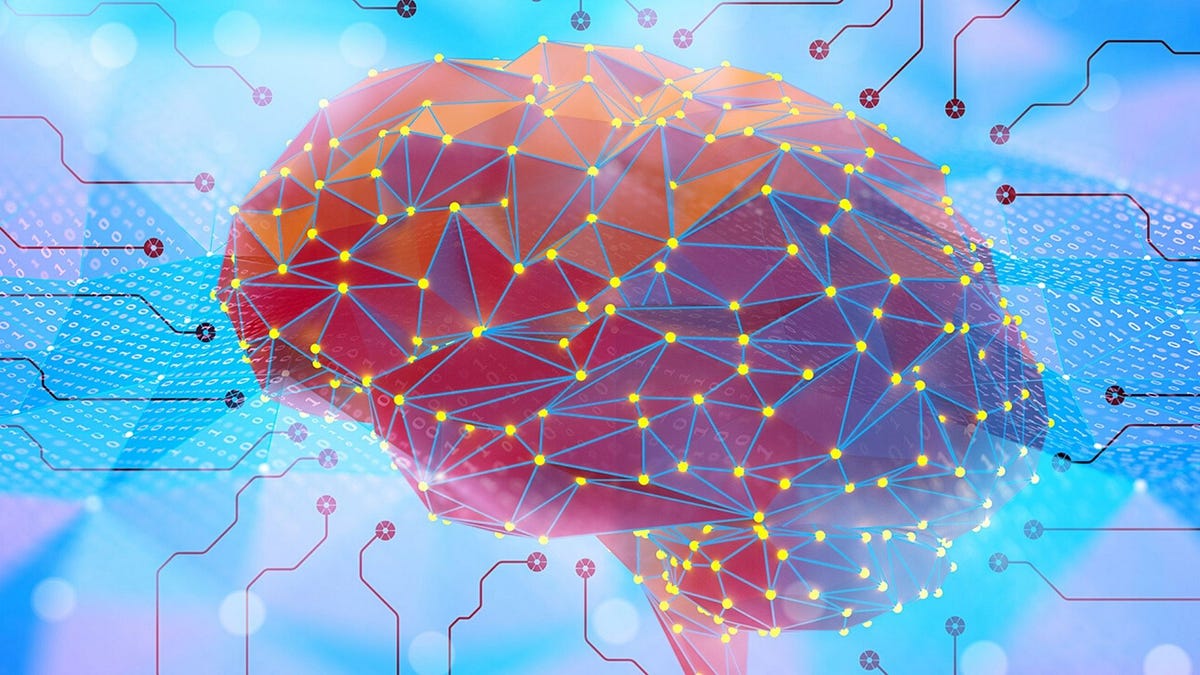The race to create smarter artificial intelligence has unveiled two powerful yet contrasting approaches: Symbolic AI, with its human-like reasoning through explicit rules and logic, and neural networks, which excel at learning patterns from vast amounts of data. While each shines in its own domain, their true potential emerges when combined.
Consider Symbolic AI as the methodical problem solver, breaking down complex reasoning into logical steps that humans can follow and verify. Much like a master chess player explaining their strategy, Symbolic AI makes its decision-making process transparent and interpretable. In contrast, neural networks operate more like the intuitive human brain, discovering hidden patterns and relationships through exposure to examples rather than explicit programming.
The integration of these approaches – known as neuro-symbolic AI – is transforming how developers build intelligent systems. By combining the logical precision of symbolic reasoning with the adaptive learning capabilities of neural networks, developers can now create AI systems that both learn effectively and explain their decisions clearly. As highlighted in a recent study in Neural Computing and Applications, this hybrid approach is particularly powerful for complex tasks requiring both pattern recognition and logical reasoning.
For AI practitioners and developers, understanding how to leverage both paradigms has become increasingly crucial. The ability to seamlessly integrate rule-based reasoning with deep learning architectures opens new possibilities for creating more robust and trustworthy AI systems – ones that can both learn from experience and follow explicit rules when needed.
We’ll explore how developers can effectively implement both approaches, leverage their unique strengths, and create powerful AI systems that combine the best of both worlds.
Understanding Symbolic AI
Symbolic Artificial Intelligence (AI) represents one of the foundational approaches to creating intelligent systems, focusing on explicit knowledge representation through human-readable symbols and logical rules. Unlike modern machine learning approaches that rely on vast amounts of data, symbolic AI operates more like human reasoning, using well-defined rules and relationships to solve complex problems.
Symbolic AI uses formal logic and symbolic manipulation to represent and process information. For example, in a medical diagnosis system, knowledge might be encoded as logical rules like “IF patient has fever AND cough AND difficulty breathing THEN investigate for pneumonia”. This makes the decision-making process transparent and interpretable, unlike the black-box nature of neural networks.
The field has found particular success in expert systems, which capture specialized knowledge in specific domains. Expert systems excel at tasks requiring logical reasoning and rule-based decision making, such as medical diagnosis, financial planning, and manufacturing resource allocation. These systems can provide clear explanations for their conclusions by tracing back through the logical rules they applied.
Natural language processing represents another significant application area where symbolic AI has made valuable contributions. Traditional NLP systems use symbolic approaches to break down sentences into their grammatical components, apply logical rules for understanding meaning, and generate appropriate responses. While deep learning has recently dominated this space, symbolic methods continue to offer advantages in scenarios requiring precise, rule-based language analysis.
Despite its strengths in logical reasoning and transparency, symbolic AI faces certain limitations. The approach requires explicit programming of rules and knowledge, making it challenging to handle uncertain or ambiguous situations. Additionally, maintaining large knowledge bases can become complex and time-consuming. However, these limitations have led to innovative hybrid approaches that combine symbolic reasoning with modern machine learning techniques, offering the best of both worlds – the interpretability of symbolic systems and the pattern-recognition capabilities of neural networks.
Strengths and Limitations of Neural Networks
Neural networks have emerged as powerful computational systems that excel at tasks which traditionally challenged conventional algorithms. These systems demonstrate remarkable capabilities in pattern recognition, processing vast amounts of data with an efficiency that often surpasses human capabilities. Just as the human brain can instantly recognize faces in a crowd, neural networks can rapidly identify complex patterns across millions of data points.
One of the most significant strengths of neural networks lies in their ability to learn from large datasets. According to research published in Analytics Vidhya, neural networks possess unique adaptive-learning and self-organization capabilities that enable them to improve their performance as they process more data. These networks can automatically discover and extract the hierarchical representations needed for detection or classification tasks, making them invaluable for modern applications.
The pattern recognition capabilities of neural networks are particularly impressive. Whether analyzing medical images for disease detection or processing natural language, these systems can identify subtle patterns that might escape human observation. They excel at tasks ranging from voice recognition to financial market analysis, demonstrating remarkable flexibility across different domains.
However, neural networks also come with significant limitations. The most prominent challenge lies in their ‘black box’ nature – while they can produce highly accurate results, understanding how they arrive at their decisions remains problematic. This lack of transparency poses serious challenges, especially in sensitive applications like healthcare or autonomous driving, where understanding the reasoning behind decisions is crucial.
The explainability challenge becomes particularly evident when neural networks make unexpected decisions. Unlike traditional algorithms where each step can be traced and understood, neural networks operate through complex layers of interconnected nodes, making it difficult to pinpoint exactly how they transform inputs into outputs. This opacity has led to increasing concerns about the deployment of neural networks in critical decision-making systems where accountability is essential.
To address these limitations, researchers are actively developing new methods for interpreting neural network decisions. These efforts aim to bridge the gap between the powerful capabilities of neural networks and the need for transparent, explainable artificial intelligence systems that can be trusted and understood by humans.
Integrating Symbolic AI with Neural Networks
The fusion of symbolic AI’s logical reasoning with neural networks’ learning capabilities represents a transformative approach in artificial intelligence. This integration addresses fundamental limitations of each approach while unlocking powerful new capabilities. Recent applications in healthcare, autonomous systems, and cybersecurity demonstrate how this hybrid architecture delivers both interpretable results and adaptive learning.
Combining the explicit rule-based reasoning of symbolic AI with the pattern recognition strengths of neural networks, this integration enhances AI’s capabilities. Traditional neural networks operate as black boxes, making their decision-making process opaque. The symbolic component provides clear logical steps and explanations, while the neural network elements enable the system to learn from data and handle uncertainty in ways that purely symbolic systems cannot.
Consider medical diagnosis as an example: While a neural network can identify subtle patterns in medical imaging, the symbolic reasoning layer can apply established medical knowledge and protocols to explain its conclusions. This combination improves accuracy and provides physicians with transparent reasoning they can verify and trust.
In autonomous vehicles, this hybrid approach enables both rapid sensory processing through neural networks and high-level decision making through symbolic reasoning. The system can simultaneously process visual data to detect objects while applying logical rules about traffic laws and safety protocols. This dual capability is crucial for systems that must make split-second decisions while maintaining clear accountability.
The integration also excels in natural language processing tasks. Neural networks understand context and nuance in text, while symbolic reasoning applies grammatical rules and logical relationships. This combination enables more sophisticated language understanding and generation, with the ability to explain its interpretations step by step.
Most importantly, this hybrid approach addresses the scalability challenges faced by traditional AI systems. The neural components can handle large amounts of complex data, while the symbolic elements maintain logical consistency and enable knowledge transfer across different domains. This synergy allows for more efficient learning with less training data than purely neural approaches would require.
| Domain | Integration Type | Neuronal vs Connectionist | Local vs Distributed | Standard vs Non-standard |
|---|---|---|---|---|
| Healthcare | Hybrid | Connectionist | Local | Standard |
| Image Processing | Hybrid | Neuronal | Local | Standard |
| Business Management | Hybrid | Connectionist | Local | Standard |
| Brain Modeling | Hybrid | Neuronal | Local | Standard |
| Finance | Hybrid | Connectionist | Local | Standard |
| Recommender Systems | Hybrid | Connectionist | Local | Standard |
| Natural Language Processing | Hybrid | Neuronal | Local | Standard |
| Information Retrieval | Hybrid | Connectionist | Local | Standard |
| Question Answering | Hybrid | Neuronal | Local | Standard |
| Dialogue Systems | Hybrid | Neuronal | Local | Standard |
| Cyber Security | Hybrid | Connectionist | Local | Standard |
| Education System | Hybrid | Connectionist | Local | Standard |
| Robotic | Hybrid | Connectionist | Local | Standard |
| Smart City | Hybrid | Connectionist | Local | Standard |
| Safe Machine Learning | Hybrid | Connectionist | Local | Standard |
Applications of Neuro-Symbolic AI

Neuro-symbolic AI represents a significant advancement in artificial intelligence, combining the pattern recognition capabilities of neural networks with the logical reasoning of symbolic AI. This integration is enhancing various sectors with its ability to deliver both high accuracy and clear interpretability.
In healthcare, neuro-symbolic AI has shown potential in medical diagnostics and treatment planning. By analyzing vast amounts of patient data while incorporating medical knowledge and reasoning, these systems can provide transparent explanations for their diagnoses that doctors can understand and validate.
For example, a neuro-symbolic diagnostic system can identify potential abnormalities in medical images while explaining its findings using established medical knowledge, improving both accuracy and physician trust.
The field of robotics has seen significant advancements through the implementation of neuro-symbolic AI. These hybrid systems allow robots to better understand their environments, plan actions, and adapt to unexpected situations by combining learning from sensor data with logical reasoning. This integration enhances the ability of robots to perceive and interact with their surroundings and provides clear explanations for their decision-making processes.
In the financial sector, neuro-symbolic AI is improving fraud detection and risk assessment capabilities. Traditional rule-based systems often struggle to keep up with evolving fraud tactics, but neuro-symbolic approaches merge pattern recognition with symbolic reasoning to identify suspicious activities while offering interpretable justifications. This transparency is especially valuable in financial services, where legal requirements often mandate explanations for decisions.
Beyond these applications, neuro-symbolic AI is making strides in automated quality control for manufacturing. Here, the systems combine visual inspection capabilities with logical reasoning about product specifications. In the realm of cybersecurity, these systems enhance threat detection by integrating pattern recognition with rule-based security policies, resulting in more robust and explainable security solutions.
The key advantage of neuro-symbolic AI across all these applications is its ability to bridge the gap between high-performance machine learning and human-understandable reasoning. This combination not only improves accuracy but also ensures that complex decisions can be explained and verified by human experts, making AI systems more trustworthy and practical for real-world deployment.
Challenges and Future Directions

Swirling colors representing neuro-symbolic AI concepts. – Via aidigitalx.com
Integrating neural networks with symbolic reasoning systems marks a significant advancement in artificial intelligence, yet several critical challenges remain. The path toward robust neuro-symbolic AI systems faces complex hurdles in scalability, particularly when handling large-scale knowledge bases and real-world applications. Current systems often struggle to maintain performance as the complexity of symbolic rules and neural network architectures grows exponentially. Scalability challenges manifest most prominently in computational resource requirements. Processing massive knowledge graphs while maintaining logical consistency demands substantial computing power, often making practical implementations prohibitively expensive for many organizations.
For instance, studies have shown that current deep learning trajectories are becoming computationally unsustainable, necessitating more efficient integration methods.
| Metric | Description |
|---|---|
| Accuracy | Measures the correctness of the system’s output |
| Inference Time | The time taken to reach a decision |
| Interpretability | How easily the decision-making process can be understood |
| Transparency | Visibility into the internal workings of the system |
| Scalability | Ability to handle increasing amounts of data or complexity |
| Resource Utilization | Efficiency in using computational resources |
Integration complexity presents a significant obstacle in the field of neuro-symbolic systems. Bridging the gap between the statistical learning of neural networks and the logical inference of symbolic reasoning is technically challenging. Engineers need to carefully balance the preservation of logical consistency while capitalizing on the pattern recognition capabilities of neural networks. Achieving a seamless fusion of these two disparate approaches requires sophisticated architectural designs that maintain the strengths of both paradigms without compromising their effectiveness.
Ethical considerations also present important challenges. As neuro-symbolic systems become more advanced, questions arise regarding their decision-making transparency and the potential for biases. It is essential that the integration of symbolic reasoning with neural networks addresses concerns about explainability, ensuring that the system’s conclusions can be traced and understood by human operators. This is especially crucial in sensitive applications such as healthcare diagnostics or legal decision support.
Looking to the future, researchers are actively pursuing several promising directions. Advanced integration frameworks are being developed that can automatically balance computational efficiency with logical reasoning capabilities. These frameworks aim to optimize resource utilization while preserving the robustness of symbolic operations. Additionally, new architectural approaches are being explored to enhance the scalability of neuro-symbolic systems without sacrificing their reasoning abilities.
The field is also seeing an increased focus on developing standardized evaluation metrics for neuro-symbolic systems. Such metrics will be vital for comparing different approaches and systematically measuring advances in the field. This effort toward standardization may help accelerate progress by providing clear benchmarks for improvement and enabling researchers to better understand the trade-offs between different architectural choices.
Conclusion: Enhancing AI Development with SmythOS
The integration of symbolic AI and neural networks marks a significant advancement in artificial intelligence; however, developers often encounter complex challenges when trying to bridge these two paradigms. Through extensive research and development, SmythOS has emerged as a pioneering platform that effectively addresses these integration obstacles, providing developers with a solid foundation for building sophisticated AI systems.
SmythOS features a visual workflow builder that simplifies the traditionally complex process of AI development, making it an intuitive experience. This enables developers to create hybrid AI solutions without needing extensive coding knowledge. This democratization of AI development opens new opportunities for teams to experiment with and implement advanced AI capabilities more efficiently than ever before.
A standout feature of the platform is its built-in debugging environment, which offers complete visibility into the decision-making processes of agents. This transparency allows developers to quickly identify and resolve integration challenges, significantly reducing development cycles and enhancing the reliability of AI systems.
What truly distinguishes SmythOS is its efficient execution framework, which adeptly manages the computational demands of both symbolic reasoning and neural network operations. This optimization ensures that hybrid AI systems can operate at scale while maintaining high performance—a critical requirement for enterprise-grade applications.
As artificial intelligence continues to evolve, SmythOS’s approach to merging symbolic AI with neural networks positions it as an essential tool for developers looking to build more intelligent, adaptable, and powerful AI systems. The platform’s focus on accessibility, transparency, and performance lays the groundwork for the next generation of AI development, where the strengths of both paradigms can be fully harnessed.
